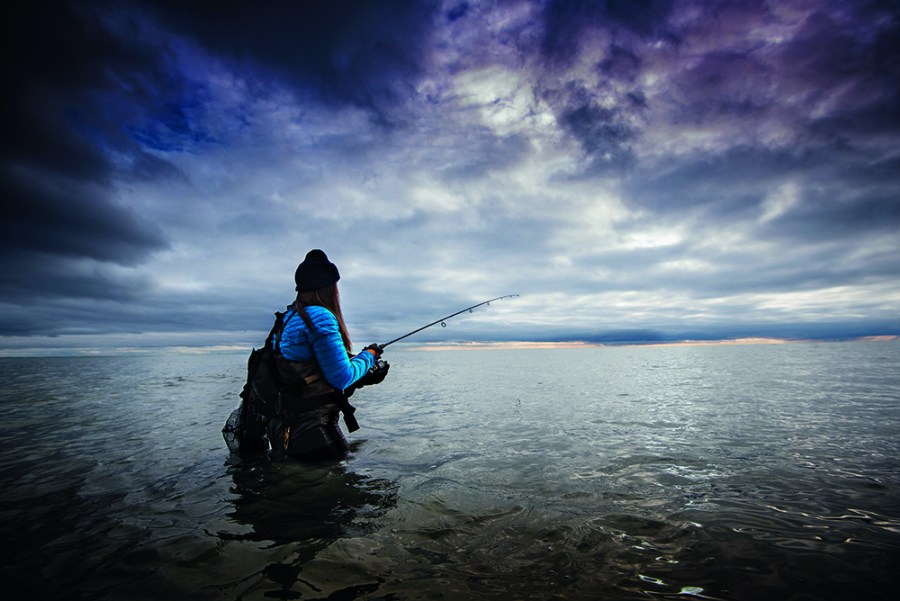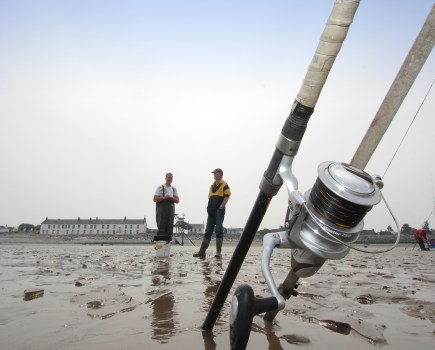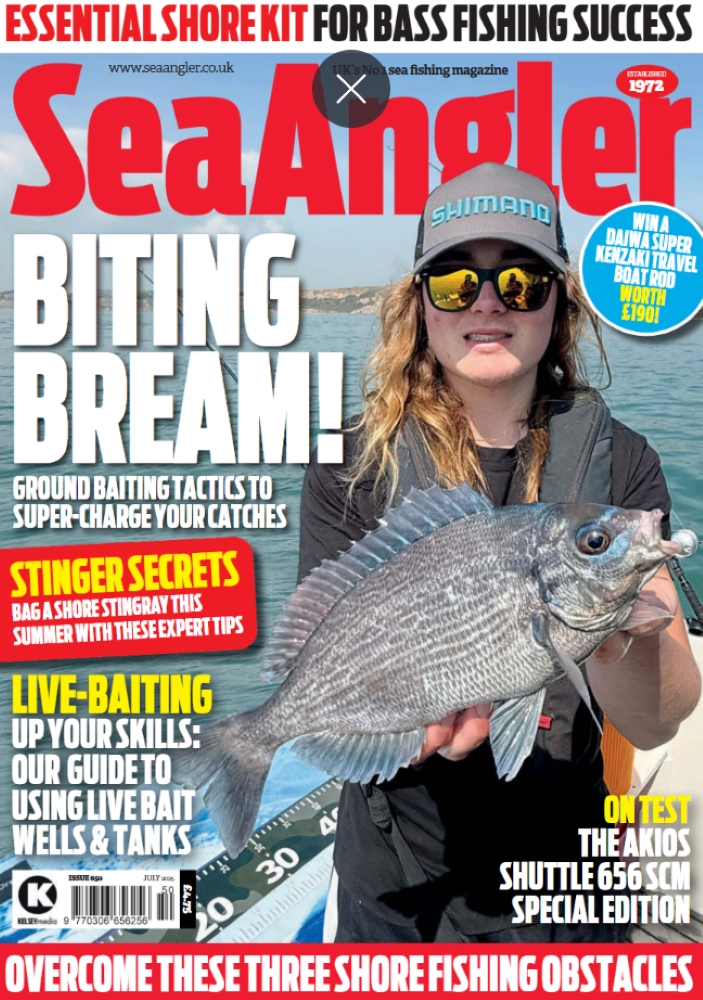Bass fishing takes anglers to all sorts of isolated rock marks, inshore reefs or estuary systems but very often the favourite is the wild surf beaches which proliferate in the west of England, wales and Ireland. But quite often we don’t pay enough attention to the features which make these beaches particularly attractive to bass and to the tactics required to catch them.
It’s worth taking time to reconnoitre your next beach venue and here are a few tips for making sure you get it right.
- Beach structure
The first thing to do is to look for structure which will increase your chances. Bass love features to hunt along and around so how can you spot the right kind of feature to fish to.

- Slope of camber on the beach
A steeper beach will often have deeper water in close, whereas a shallow gradient will indicate that the water depth is likely to be shallower for longer.
- Drop Offs
Always look for areas where the sand levels change significantly. This may cause a natural lip or edge along the beach where bass search for food.
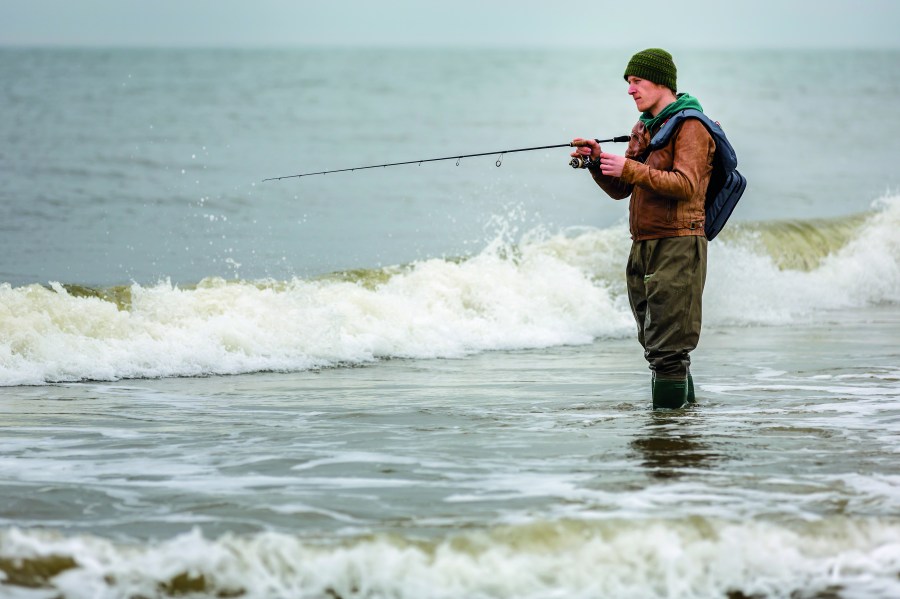
- Troughs
These are the areas which often run parallel with the beach. They are usually deeper channels which often provide cover for bait fish and are perfect ambush points for feeding bass.
- Sand Bars
These are often found with troughs and can sometimes be visible throughout all states of the tide. They provide useful breaks in the waves and prime areas for sand-eels to seek refuge.
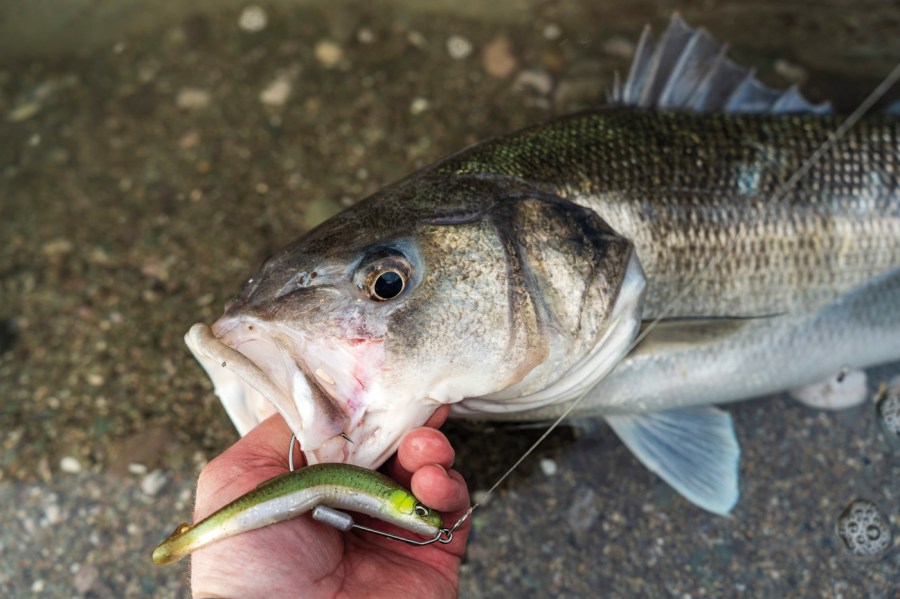
- Current
The key is working out the direction the bass will travel and when they feed. Locate the current direction and you’ll locate bass.
- Wave behaviour
Observing the way waves are breaking will help you understand the structure under the surface. Waves break when the water gets shallower, the speed reduces and causes the water to scrub its energy.
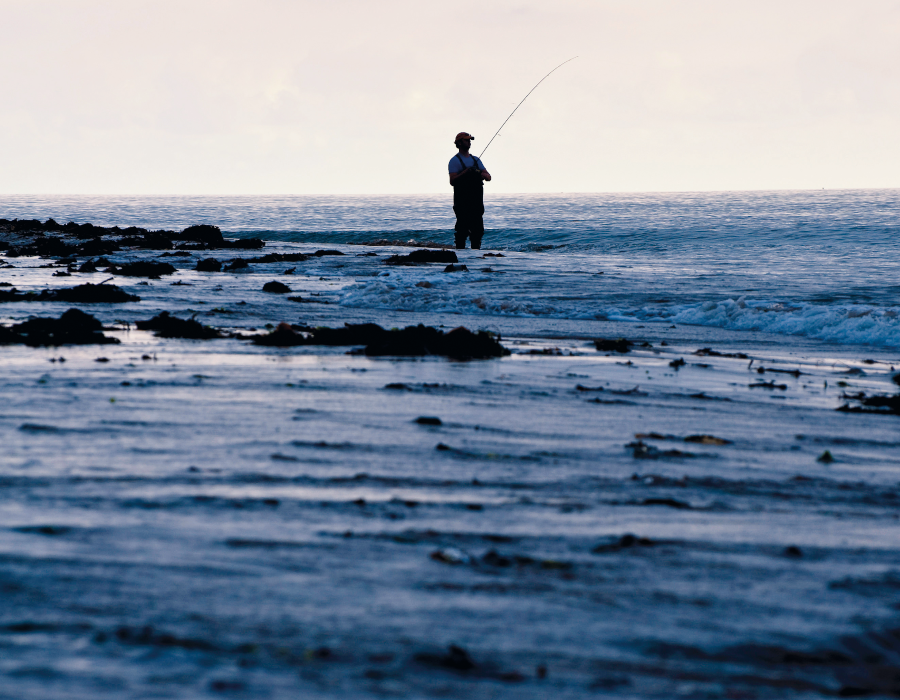
- Food availability
Look out for the presence of food. This could be signs of shellfish like razor clams or lugworm casts, or softer sand which might hold sand-eels. Patrolling birds will also help you seek out areas rich in food and, given the correct, conditions hold bass.
- Fish in the correct conditions
Your style of fishing can be very dependent on reading the conditions correctly. Some places won’t fish properly unless the wind is in the right direction, or speed or even creating a specific wave motion. These beaches quite often fish best after there has been an onshore blow but before the tidal turning point where the swell and surf get too manic. There is often a fine line between perfect conditions and blown out conditions. Its best to get a good interval between each wave rolling in, allowing for space between each to break and throw section of white water. This is where the wave collapses and leaves a large area of fizzed up with oxygenated white water. Bass use these areas to their advantage by providing cover from above and when the wave breaks the baitfish get caught up in the chaos and become disorientated. Being patient and timing casts into the areas of structure when the white water is fizzing is the most likely area to get a hook up.
- Be prepared
Having looked at some of the key principles for finding fish a d where best to target them, all this is wasted if you haven’t got the proper tackle to present a lure effectively.
Lure choice
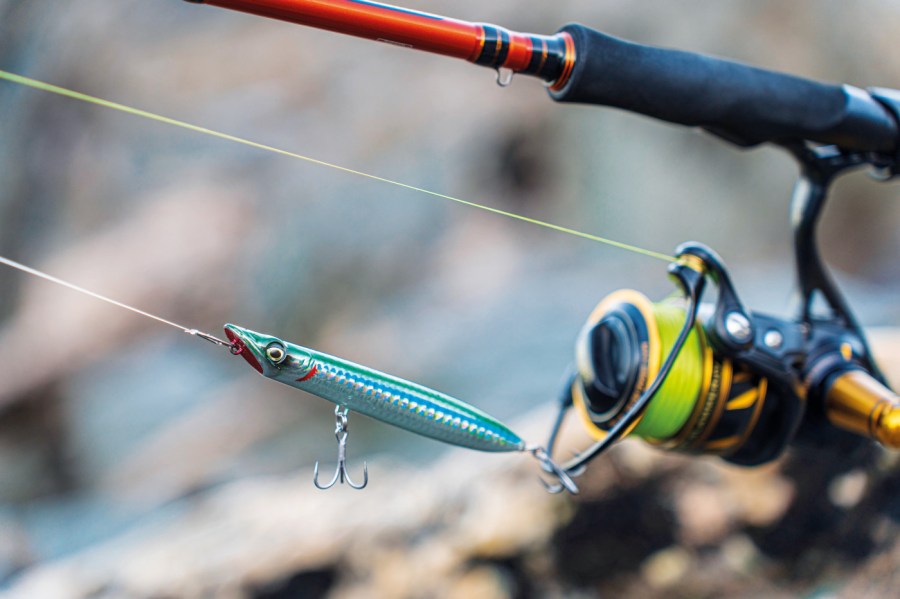
When you are lure fishing keep it simple – the only real variations should come in the form of using different weights to handle the various strengths of the conditions. White lures are usually very effective unless the water is clear in which case a natural sand-eel pattern will be a better choice.
Fishing with a sinking lure means it sinks below the turmoil before starting a retrieve These tend to be more effective than a floating version as you’ll get them into the zone much faster and with a pause can be kept there longer. Many manufacturers make surf variants of their models that are designed to handle choppier waters.
Pencil and needles
Sinking pencil baits work well when facing strong headwinds because they tend to be the best casters, They can be devastating when worked in a steady retrieve, especially when you time it to work in between the waves.
Soft baits
Perhaps the easiest to work with as you can simply cast them and retrieve, altering the jig head weight is needed to account for the size of the surf or distance required.
Bucktails
They can be lethal in the surf, it is perfect for holding and gripping down in the heavy surf and remaining in the kill zone. They can be fished on their own or with dressed with a teade3r of trailer for added action.
Metals
When distance is needed metals can be very useful. The Dexters wedge was one of the first used for this but there are a host of other long-range casting jigs.
Preparation is key and you need to start by exploring your target beach over low spring tides to help identify structures. Once you’ve mapped it out then is the time to start thinking about the type of gear to use.

